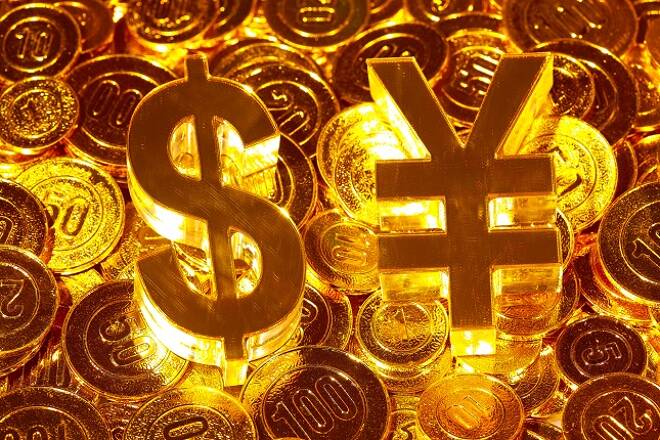Advertisement
Advertisement
Gold Could Reach $2,000 as Early as This Year
Published: Feb 5, 2020, 09:03 GMT+00:00
The liquidity injections by the PBC and other market support measures resulted in an impressive growth of so-called risk assets.
American S&P 500 added 1.5% on Tuesday trading results, showing a slight decline on Wednesday morning, according to the dynamics of futures on the index. The majority of Asian platforms are adding more than 1% on Wednesday morning following the American platforms, reacting to the easing of monetary conditions.
The reverse side of market optimism was the correction of safe-havens such as Japanese yen and Gold.
The Japanese yen declined against the greenback, lead USDJPY to its highs in a week and a half near 109.50, showing a rebound from the 200 SMA.
Gold dropped 2.6% on Monday and Tuesday from six-year highs above $1590. However, so far, Gold receives support at $1550, which was the area of last year’s highs. As is often the case in the markets, the severe former resistance became the support.
Still, behind Gold’s growth is more than a momentary demand for safe-havens in fear of a coronavirus from China.
In May last year, precious metal prices grew mainly due to the easing of the monetary policy of major global central banks. Lower interest rates, resuming of asset purchases on central banks’ balance sheets – all these measures eventually spur inflation. The acceleration of price growth has become increasingly evident since the middle of last year, which against the backdrop of close to zero rates makes investors look for alternatives to bonds as a way to protect portfolios from inflation.
This situation also explains the record volumes of assets at gold-related index funds. The inflow intensified at the end of the last year, along with the sharpest growth phase of stock markets. This contradicts the idea that the demand for safety drives Gold.
Besides, central banks are also building up gold reserves. Behind these steps is the desire to diversify reserves amid concerns over the increased debt burdens of the United States, Japan, and many eurozone countries. For good or worse, currencies of these countries and regions ARE most often used in reserves.
In increasing frequency, the question of what will happen to accumulated debt is now on the agenda. And the first thing that comes to mind is that the most straightforward way to reduce debt burden will be to push down the value of their currency. This sounds like competitive devaluation, only in a more manageable form through the soft monetary policy. A side effect of this strategy is seen as the rise in prices of assets, primarily gold as an insurance against inflation. Other commodities, including Oil, also tend to grow in such conditions, but mostly in response to the economy acceleration and demand growth.
The Gold price rose by about a quarter in 2019, a repeat of the same dynamics this year opens the door to growth in the region of $2000 per troy ounce, which will be higher than the record levels of 2011. However, it is entirely consistent with the times of extremely cheap money at a relatively healthy rate of growth.
This article was written by FxPro
About the Author
Alexander Kuptsikevichcontributor
Alexander is engaged in the analysis of the currency market, the world economy, gold and oil for more than 10 years. He gives commentaries to leading socio-political and economic magazines, gives interviews for radio and television, and publishes his own researches.
Advertisement
